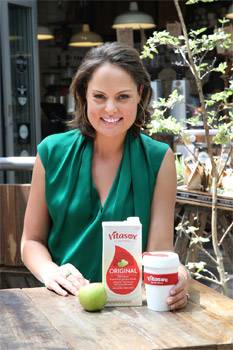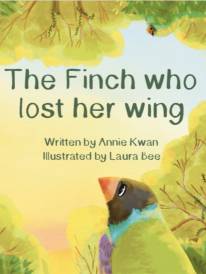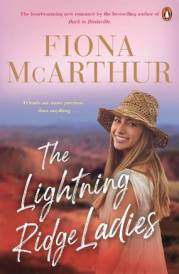Zoe Bingley-Pullin Nutrition Australia Healthy Eating Pyramid Interview

Zoe Bingley-Pullin Nutrition Australia Healthy Eating Pyramid Interview
The first in 15 years, the changes to the Nutrition Australia Healthy Eating Pyramid have got lots of Australians talking. But as with any new lifestyle recommendations or ways of doing things, whether they be nutritional, technical or so on, it can take time for us to really understand how to put them into practice – including the changes to the Healthy Eating Pyramid.
To help combat confusion, nutritionist, star of Good Chef Bad Chef and Vitasoy ambassador Zoe Bingley-Pullin has provided her insights on the Nutrition Australia Healthy Eating Pyramid.
Interview with Zoe Bingley-Pullin
Question: What can you tell us about the new Nutrition Australia Healthy Eating Pyramid?
Zoe Bingley-Pullin: The new Nutrition Australia Healthy Eating pyramid provides us with more -healthy' options to include in our diets and receive the necessary nutrients. This is fantasticnews for those who follow food trends such as Paleo, veganism and flexitarianism.
It also works to put a stake in the ground when it comes to healthy eating, to combat confusion about what's healthy and provide us with some guidance on what we can incorporate into our diets to maintain a healthy lifestyle.
Question: What are the main changes to the Nutrition Australia Healthy Eating Pyramid?
Zoe Bingley-Pullin: The top five changes I think are important to note are:
Junk food and sugar: now sit outside the pyramid
Soy milk: now sits alongside cow's milk, recognising alternative milks are now a staple in many Australian households
Herbs and spices: are included for the first time as a flavour alternative to commercial sauces and pastes
Protein: options now include vegetarian sources, like tofu, which is now mentioned in the protein section when previously meat, eggs and dairy were the only options Breads and cereals: are no longer the only grains in the pyramid; now quinoa and soba noodles are included under grains
Question: How does the new Nutrition Australia Healthy Eating Pyramid approach meat consumption?
Zoe Bingley-Pullin: In a much more diverse manner than before! Meat was previously considered one of the key sources of protein in the pyramid. But now it has been joined by vegetarian sources of protein, like tofu. This inclusion is great as it helps to encourage diversity in our diet – opting for vegetarian source of protein from time to time is beneficial to expand our nutrient intake.
Question: Why is this the first change to the Nutrition Australia Healthy Eating Pyramid in 15 years?
Zoe Bingley-Pullin: According to Nutrition Australia, the pyramid has been updated to 'combat growing nutrition confusion and risky fad diets". Its true Australians are concerned about health and wellbeing and are seeking information on what they should be eating. There are also many different points of view in the media about what we should and shouldn't eat. The new Healthy Eating Pyramid really works to overcome conflicting and confusing information.
Question: Can you talk about the new additions to the Nutrition Australia Healthy Eating Pyramid?
Zoe Bingley-Pullin: Soymilk, olive oil, quinoa and soba noodles are the some of the most exciting new additions to the Healthy Eating Pyramid. They allow greater diversity in the diet and acknowledge differentstyles of eating and intolerances, e.g. lactose intolerant or vegan.
Question: Can you tell us about the 'herbs and spices' part of the new Nutrition Australia Healthy Eating Pyramid?
Zoe Bingley-Pullin: Herbs and spices have finally got a mention as an addition to the diet and are recommended as the optimal way to add flavour to meals in place of commercial sauces and pastes. It will help to add diversity and greater nutrient load to our diet and will also help us cut down on consumption of additional sugar and preservatives often found in commercial sauces and pastes.
Question: What are your thoughts on the additions of soy milk, tofu and quinoa to the Nutrition Australia Healthy Eating Pyramid?
Zoe Bingley-Pullin: It's great because there's even more diversity now around where we can source our necessary nutrients. For example, alternative milks are now a staple in many Australian households and it's a good step that we're recognising soymilk as a healthy alternative to dairy milk. It also brings to light the idea of looking outside the box for nutrition – soybeans are a -complete' protein and majority of soy milks these days are enriched with calcium (like Vitasoy Calci-Plus).
Question: How can we put these changes to the new Nutrition Australia Healthy Eating Pyramid into practice within our household?
Zoe Bingley-Pullin: I think the Nutrition Australia Healthy Eating Pyramid is a good guide to what we can incorporate into our diets to maintain a healthy lifestyle. Some of my tips include:
Allow vegetables to take centre stage when it comes to meal planning, dress your vegetables with proteins and fats, not the other way around.
Use a variety of herbs and spices daily to add flavour to your meal.
Alternate your sources of dairy and protein for greater diet and nutrition diversity: try soy, and try tofu as a vegetarian proteinoption.
Swap high-glycemic index carbohydrates such as white bread and pasta for low-glycemic options such as quinoa, wholegrain breads and soba noodles.
See fruits as your sugar and, if seeking sweetness, use fruit as your way to sweeten up meals – try adding chopped dates to porridge in place of sugar.
Interview by Brooke Hunter
MORE





